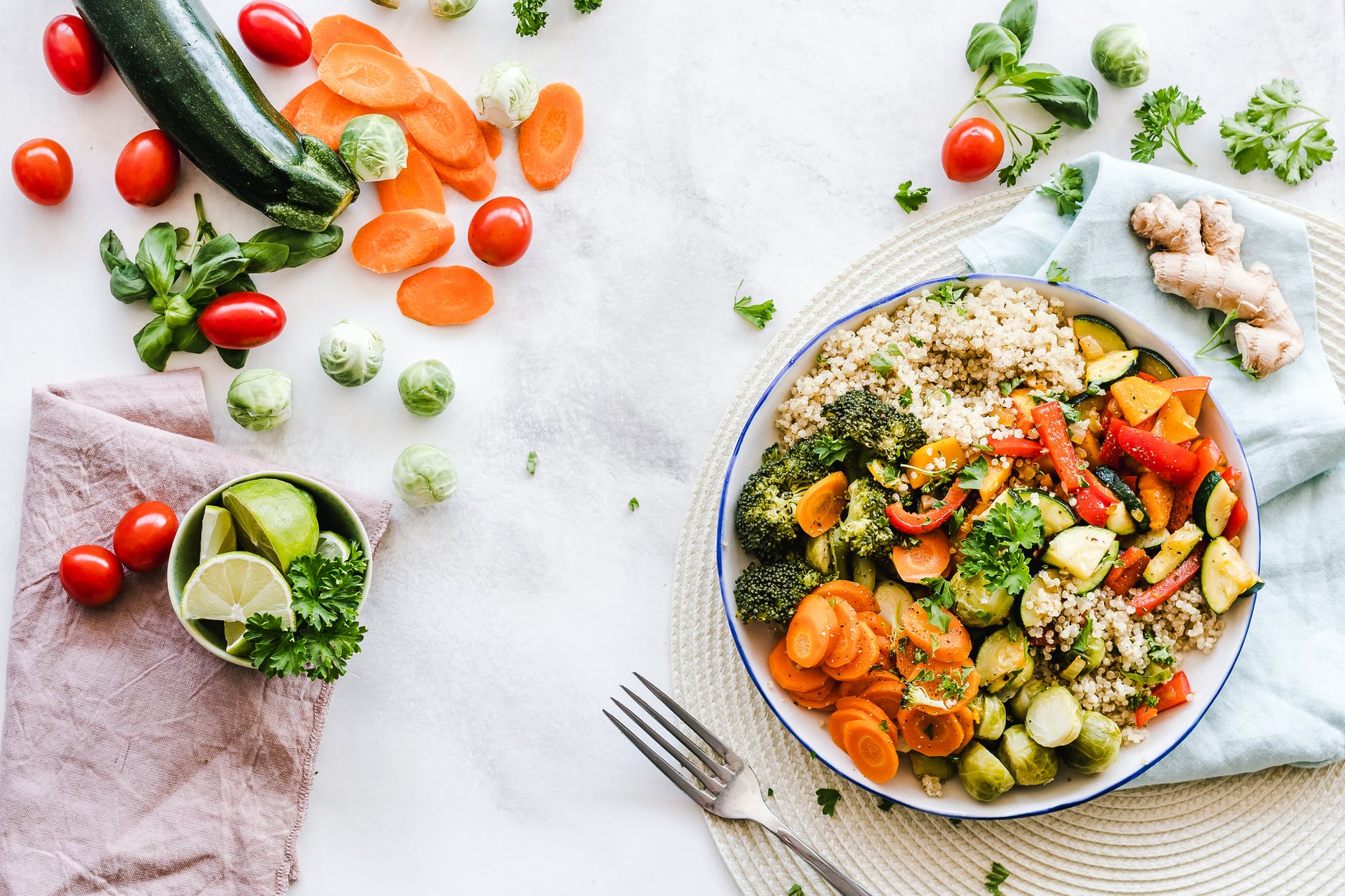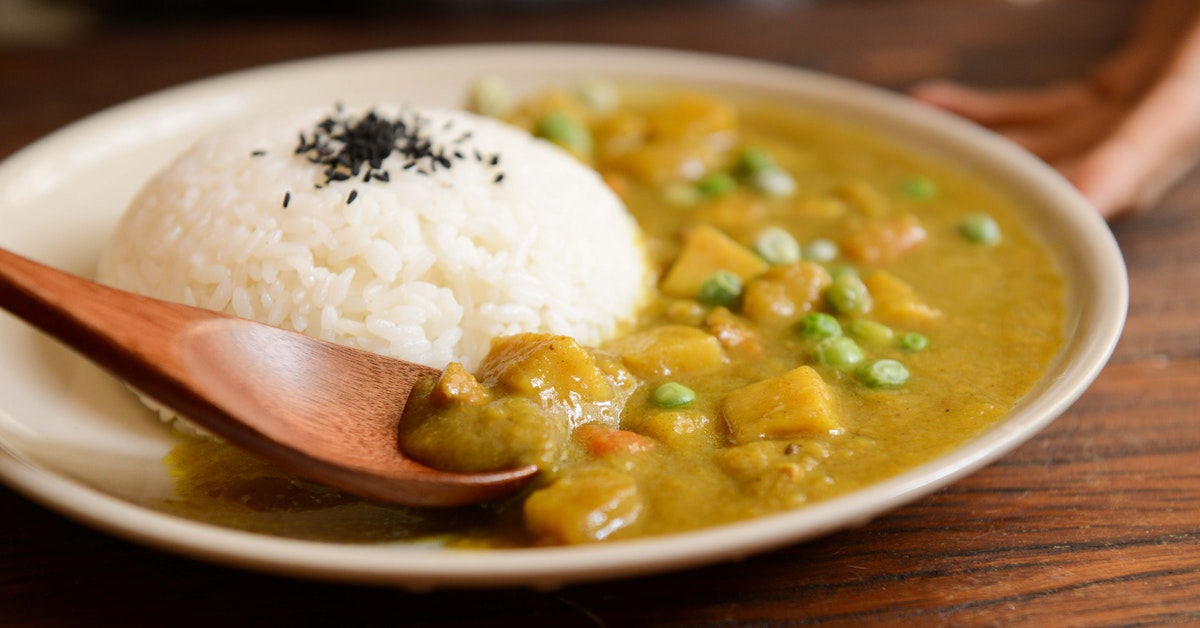The diet of a yogi is very important for attaining success in the yoga practice. It is repeatedly stressed across various Yogic schools, ashrams, and scriptures that a healthy, balanced diet is a must if the mind and body are to be perfected and brought under control.
Therefore, the concept of a yogic diet is a must-understand. Surprisingly, as advancement in pranayama practice is obtained a yogi can survive with lesser and lesser food. It is claimed that an advanced yogi can solely rely on the prana and breath to obtain all the nourishment for his body (a famous example is Prahalad Jani, a breatharian monk who claimed to have lived without food and water since the 1940s).
But for beginners and householders, which most of us are, the concept of a yogic diet according to prominent yoga scriptures – The Gheranda Samhita and Hatha Pradipika – is explained below.
Concept of a Balanced Yogic Diet in Hatha Pradipika

Translation: “One who is brahmachari, takes moderate and pure food, is regular and intent on yoga and renounces (attachment to sensual experience) becomes perfected (siddha) after a year” [1].
Explanantion
In the context of this verse, a Bhramachari is someone whose consciousness is absorbed in Brahman. It might not necessarily point to someone strictly abstaining from sexual activity but instead going a deeper level and renouncing attachment to them.
It is said that such a person (a yogi basically, who is absorbed in the quest for the highest knowledge) should take food in moderate quantities and sweet (mithara) in nature.

Translation: “A moderate diet means eating satisfying, sweet food for Shiva’s pleasure, while leaving the stomach one-quarter empty” [3].
Explanantion
- “Sweet food” in this context means fresh and pleasant food, not excessively sugary food like a milkshake or a donut. According to yoga, the food should be “sattvic” in nature, i.e., light and easy to digest. Whereas, heavy food is “tamasic” in nature and causes dullness of the mind and induces sleep.
- “Disagreeable food” means food that is stale, has unpleasant taste, toxic and not according to one’s metabolism.
- The stomach should not be stuffed with food to the point of overeating. It should only be filled half-way, leaving one-quarter room for water and one-quarter for air [1].
- “Eating to please Shiva” in this context means not eating for oneself, or not eating just for the pleasure of it. The attitude towards food should be that of treating it as a source of sustenance and fuel. Food is to be eaten so that the body can be nourished and maintained and the main goal of a Yogi – consciousness expansion and spiritual evolution can be continued uninterrupted
- Food should be considered part of one’s sadhna and not just a means for sense gratification. It should not be taken as clutch escape the mind, or bad mood or life’s stresses. From a strictly yogic perspective, food is just a source of sustenance.
- In our modern world, overeating is a major issue and many health problems are caused as a result. An alarming trend is the rate at which obesity is increasing around the world.
In 2016, 39% of adults aged 18 years and over (39% of men and 40% of women) were overweight. Overall, about 13% of the world's adult population (11% of men and 15% of women) were obese in 2016. The worldwide prevalence of obesity nearly tripled between 1975 and 2016. – Source WHO
It is not easy for the mind to quiet down and practice meditation when the stomach is heavy by overeating. Nor is it easy for the body to perform complex yoga postures when it is carrying excess weight.
To progress smoothly in one’s sadhana it is therefore essential to eat food in the proper amount and of good quality.
Among yoga practitioners and Ayurveda schools, the belief is that most diseases are caused due to:
- Irregular meal timing
- Overeating
- Unwholseome/Junk Food
According to the prominent and adored Swami Sivananda of Rishikesh:

Source: Rikhiapeeth
Through overeating you become a rogi, through sattwic diet a yogi
Swami Sivananda
Concept of a Balanced Yogic Diet in Gheranda Samhita

Translation: “Should the yogi undertake the practice of Yoga without having a measured diet, he will get several diseases and his Yoga will in no way be successful” [2].

Translation: “A measured diet is said to consist of food that is pure, sweet, rich, leaves half the stomach empty, and is eaten with love for the gods” [2].
Foods to avoid according to Hatha Pradipika

Translation: “These are not recommended: bitter, sour, spicy, salty, or hot food; green leaves, sour gruel, oil, sesame seeds, mustard, alcohol, fish, goat or other meat, curds, buttermilk, kulattha pulses, kola berries, oil cake, asafetida, garlic, and so on” [3].
Explanation
- A yogi is to have a diet consisting of simple and bland food, avoiding anything that is highly acidic, greasy or spicy. These foods can overheat the system which is to be avoided. Yogic exercises/meditations by themselves generate heat in the body and eating such foods might cause the body to get overheated.
- Meat is also considered as a food that is heavy and not suitable for a yogi.
- Asafetida, garlic and other aphrodisiac are also to be avoided since they stimulate sexual urges which can become impediment for a yogi. They are to be taken in small quantities and avoided during night due to their sexually stimulating nature.
- Alcohol is a strict no and should be avoided because it can seriously harm a yogi’s body (damage liver and brain cells). It’s also by its nature a strongly addictive substance.

Translation: “Food that is reheated, parched, too salty, too sour, or contains too many stale vegetables is improper and should be avoided” [3].
Explanation
- Food should be freshly prepared, and reheating is to be avoided. This could be in context of old times when there were no refrigerators and food kept out in the open would get spoiled. Thus, causing indigestion, wind and acidity.
- Dry foods, i.e., foods without oil or water used in preparing them are to be avoided. Oil is good for digestion when used in minimum quantity.
- Excess salt is to be avoided as it heats the body and increases the heart rate.
- Overall the concept of yogic diet is that food should be quick and easy to digest without overstraining or heating the system. Energy or prana should not get wasted heavily on digestion.

Foods to eat according to Scriptures

Translation: “These are wholesome for the best yogis: wheat, rice, barley, shashtika rice, auspicious food, milk, ghee, sugar, butter, sugar candy, honey, dry ginger, cucumbers, etc., the five potherbs, mung dahl, etc., and pure water” [3].

Translation: “The yogi should eat rice, barley meal, wheat flour, and beans such as mung, urad, and chickpeas, all clean and without husks; parvar, yam, sago, kakkola berry, Indian trumpet, dradhika, long melon, plantain, dumbari, small eggplant, raw plantain, young plantain, plantain stalk and root, large eggplant, radish, and riddhi” [2].

Translation: “He should value the five leafy greens: amaranth leaf, holy basil, parvar leaf, lamb’s quarters, and brahmi” [3].

Translation: “Fresh butter, ghee, milk, sugar, sugarcane, jaggery, and so forth; ripe plantain, coconut, pomegranate, anise cordial, grapes, country gooseberry, amla fruit, juice that is not sour, cardamom, nutmeg, clove, paurusha, rose apple, haritaki, dates: the yogi should eat these” [2].
Precautions
Medical advice from your doctor is necessary before making any changes to your diet. The diet plan here is according to historical scriptures and may not be suitable for each individual’s unique needs.
References
- Book: Hatha Yoga Pradipika: Light On Hatha Yoga, commentary by Swami Mukti Bodhananda
- Book: The Gheranda Samhita: The Original Sanskrit and an English Translation, edited by James Malinson
- Book: Hatha Yoga Pradipika by Yogi Swatmarama (author), Brian Akers (translator)
